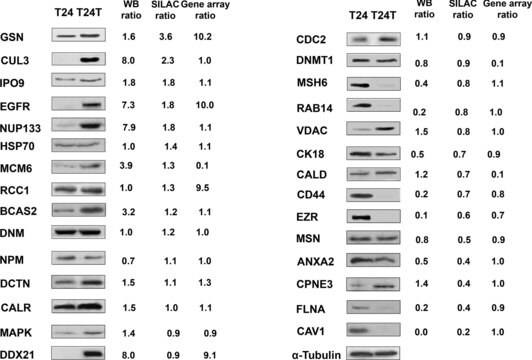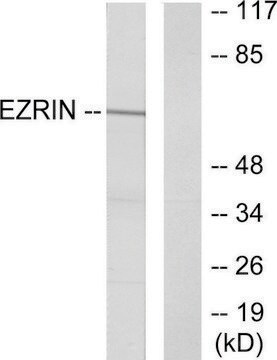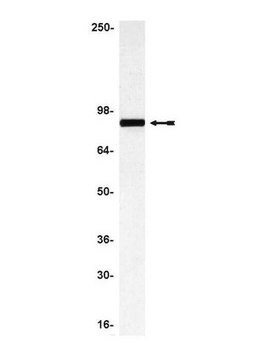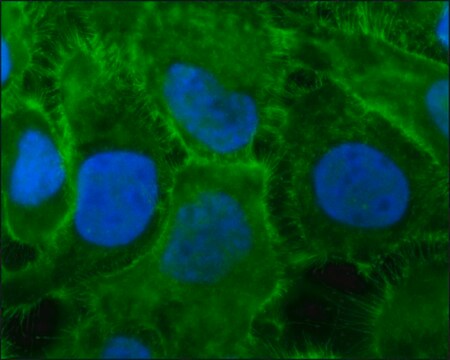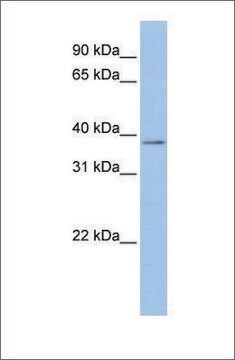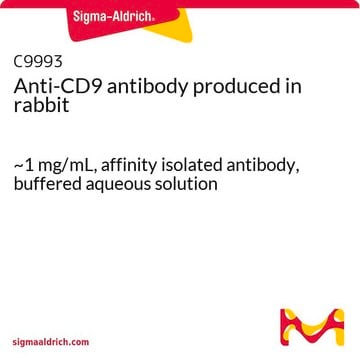SAB4200806
Anti-Ezrin antibody, Mouse monoclonal
clone 3C12, purified from hybridoma cell culture
Synonyme(s) :
Cytovillin, Villin-2, p81
About This Item
Produits recommandés
Source biologique
mouse
Forme d'anticorps
purified from hybridoma cell culture
Type de produit anticorps
primary antibodies
Clone
3C12, monoclonal
Forme
buffered aqueous solution
Poids mol.
~80 kDa
Espèces réactives
bovine, canine, hamster, kangaroo, human, monkey, rat, mouse
Conditionnement
antibody small pack of 25 μL
Concentration
~1 mg/mL
Technique(s)
immunoblotting: 1-2 μg/mL using using canine MDCK cells extract
immunofluorescence: 0.5-1 μg/mL using human epidermoid carcinoma A431 cells.
Isotype
IgG1
Numéro d'accès UniProt
Conditions d'expédition
dry ice
Température de stockage
−20°C
Modification post-traductionnelle de la cible
unmodified
Informations sur le gène
mouse ... Ezr(22350)
Description générale
The ERM proteins family are involved in the functional expression of membrane proteins on the cell surface, integrate Rho guanosine 5′-triphosphatase (GTPase) signaling regulating cytoskeletal organization and act as protein kinase A (PKA)-anchoring proteins. Therefore, ERM proteins seem to play an important role in the membrane transport of electrolytes by ion channels and transporters.
Immunogène
Application
Forme physique
Autres remarques
Not finding the right product?
Try our Outil de sélection de produits.
Code de la classe de stockage
12 - Non Combustible Liquids
Classe de danger pour l'eau (WGK)
WGK 1
Certificats d'analyse (COA)
Recherchez un Certificats d'analyse (COA) en saisissant le numéro de lot du produit. Les numéros de lot figurent sur l'étiquette du produit après les mots "Lot" ou "Batch".
Déjà en possession de ce produit ?
Retrouvez la documentation relative aux produits que vous avez récemment achetés dans la Bibliothèque de documents.
Notre équipe de scientifiques dispose d'une expérience dans tous les secteurs de la recherche, notamment en sciences de la vie, science des matériaux, synthèse chimique, chromatographie, analyse et dans de nombreux autres domaines..
Contacter notre Service technique